By Roger Rittmaster
What? You haven’t heard of the Browntail Moth? If so, you are probably the only one in Mid-Coast Maine who hasn’t heard of this invader from Europe and nearby countries. This map of reported sightings of the moth on iNaturalist tells the story:
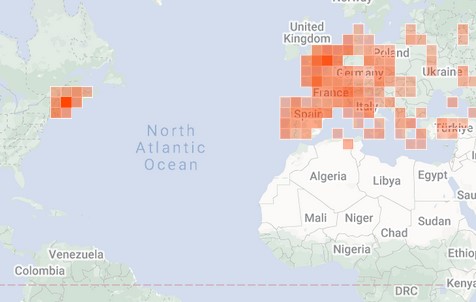
The deep red square on our side of the Atlantic is Mid-Coast Maine from Portland to Bar Harbor.
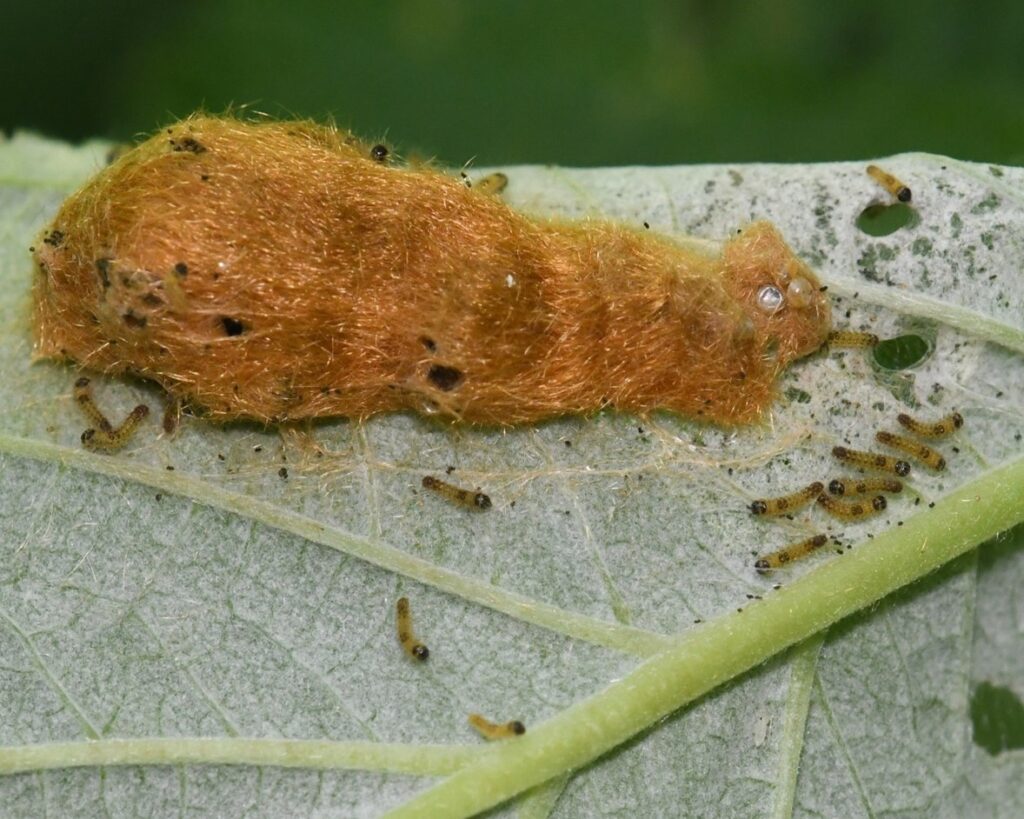
Right now, the caterpillars are emerging from their winter webs. But, to understand their lifecycle, it’s easiest to go back to early July, when the adult moths laid their eggs:
The eggs are laid in a mass surrounded by hairs from the female moth. A typical spot is high up in oak trees, but the female is only a little particular. Cherry, apple, crabapple and many other species will do. After about 3 weeks, tiny caterpillars, only a few millimeters long, emerge. The above photograph shows the newly emerging caterpillars from a nest on the underside of a raspberry leaf.
The caterpillars eat voraciously throughout August into September, shedding their skin twice to reach their third instar (each instar describes the caterpillars’ maturation stage between shedding, starting with the first instar that emerges from the egg). During this time, they are so small that they cause little damage. Then, when they are less than 1 cm in length, they enter diapause (a type of hibernation) by clustering together and building a winter nest, usually near the end of a branch and often high up in a tree. They bind a leaf together and reinforce the leaf stem with silk, preventing it from falling off the tree. In this state, they have no problem surviving sub-zero temperatures. Oak leaves that remain on a tree in mid-winter in Mid-Coast Maine are likely to be the winter webs of the Browntail Moth. Where winter webs can be reached, such as on apple, crabapple or ornamental cherry trees, the webs can be clipped off and either put in soapy water or burned. This will prevent damage to that tree, although caterpillars can fall to the ground and move between trees. In fact, they are highly mobile and will even hitch rides on vehicles to infest new areas.
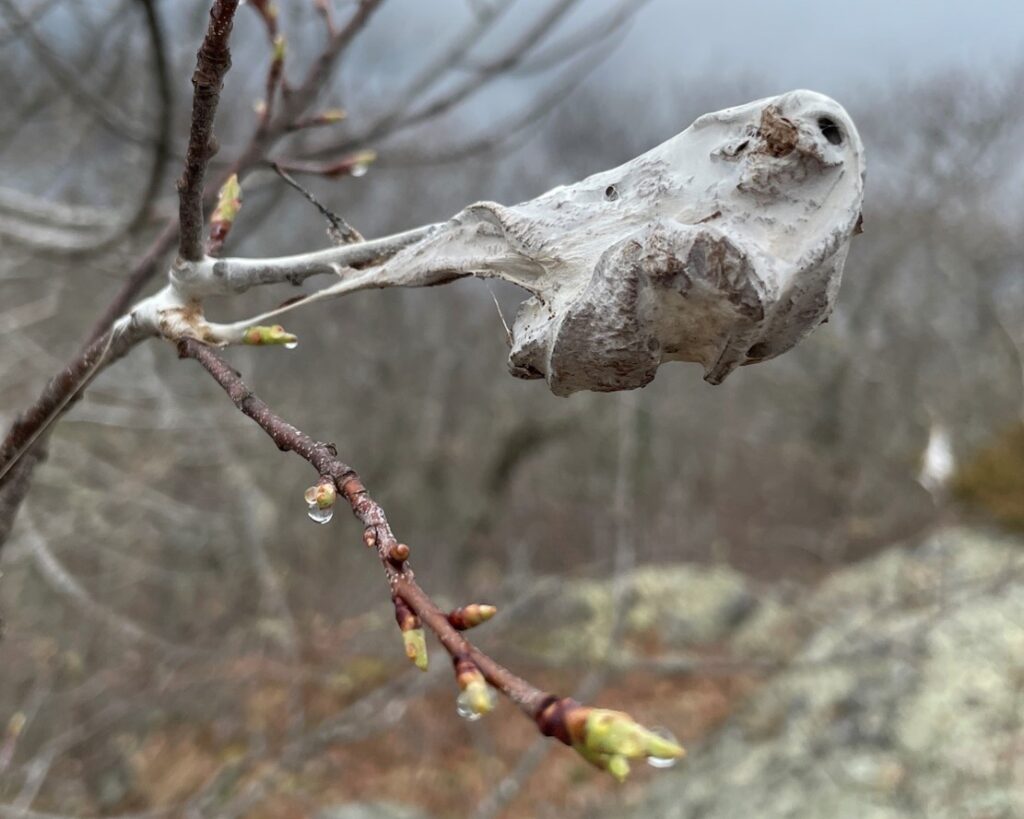
Typical Browntail Moth winter web that can contain hundreds of caterpillars.
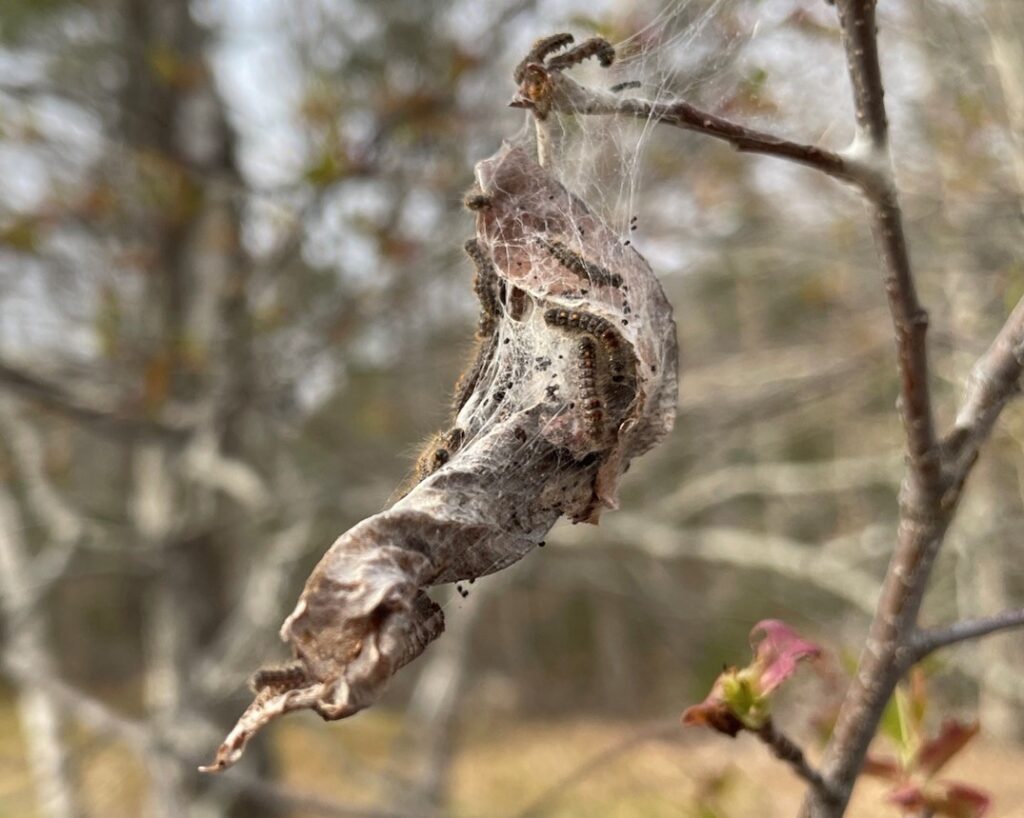
In early May, just as young leaves start to grow, the caterpillars emerge from their winter slumber.
It doesn’t take long for the caterpillars to begin to make a noticeable impact on the leaves, and in a heavy infestation, they can totally defoliate a tree.
Leaf damage in late May from Browntail Moth caterpillars. A few remains of the winter webs can be seen at the tips of branches.
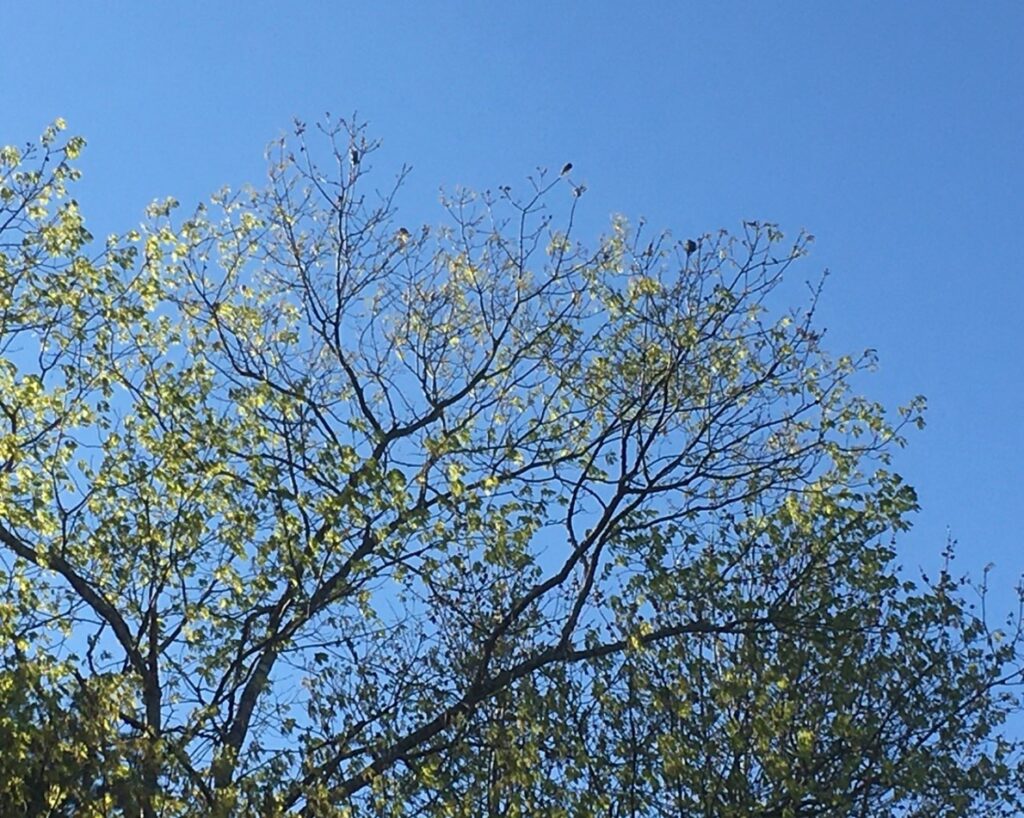
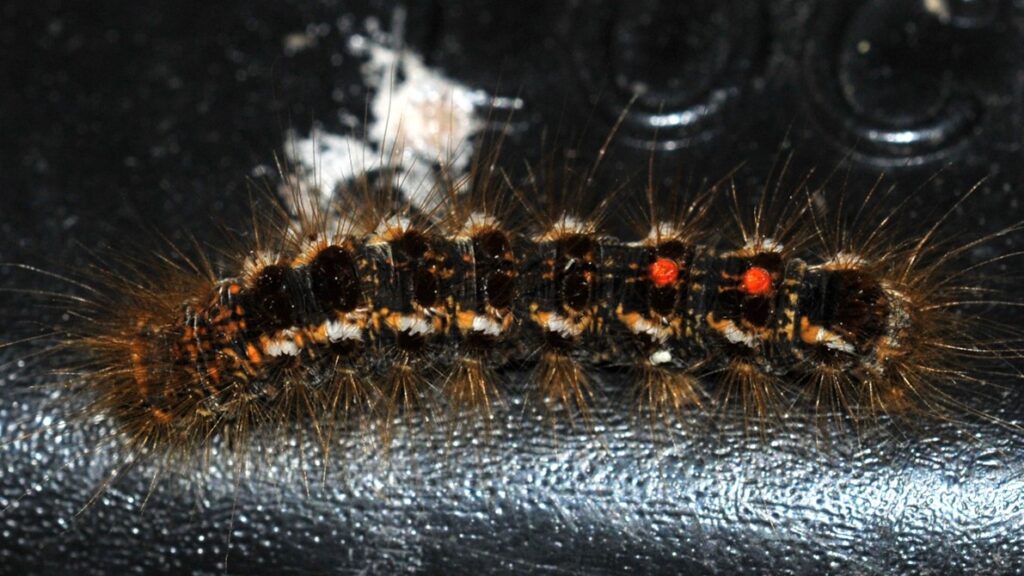
The caterpillars are easy to recognize by the two orange dots near their hind end and the numerous hairs that cover their body.
These barbed hairs are the second major problem from the Browntail Moth. They are shed throughout the caterpillar’s life and cause an itchy rash similar to poison ivy. If inhaled, they can cause asthmatic symptoms. Some people are minimally bothered by the hair; others can develop a severe rash and respiratory symptoms. The hairs can persist for months or years in the environment and can be carried by wind or mowing the lawn. They can end up on clothes put outside to dry.
By mid-June the caterpillars have reached their maximum size. If they are present in sufficient numbers, they will band together and form a pupal nest.
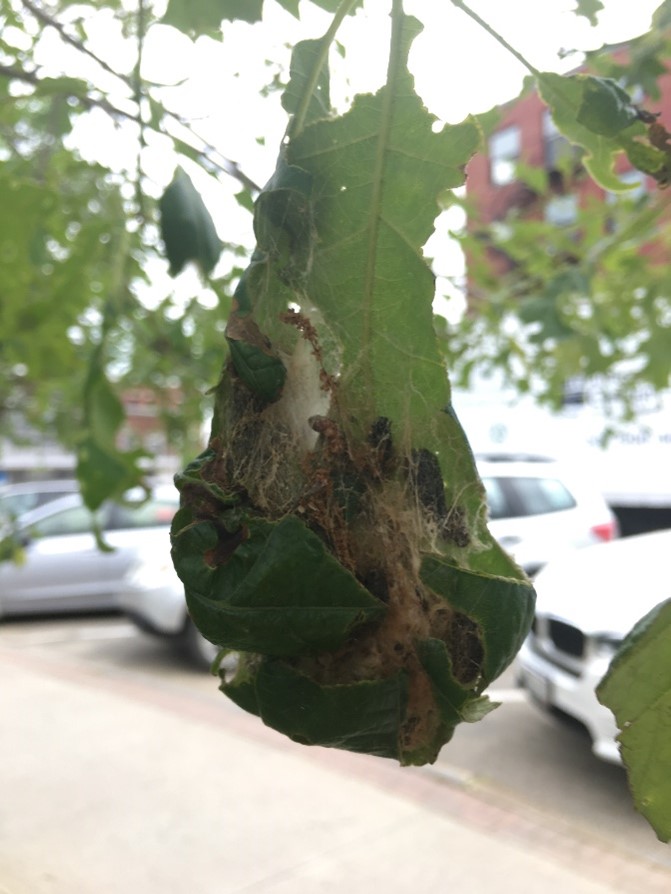
Browntail Moth pupal nest found in late June next to the Town Offices in Belfast.
By the beginning of July adult Browntail Moths emerge from their pupa. Because they have few natural enemies in our area, the adults can be present in large numbers and are highly attracted to lights. In fact, during the first two weeks of July it is best to leave outside lights off to avoid attracting increased numbers of these moths. Fortunately, the hairs on the adults are not irritating. By mid-July, the adults have mated, laid eggs and died.
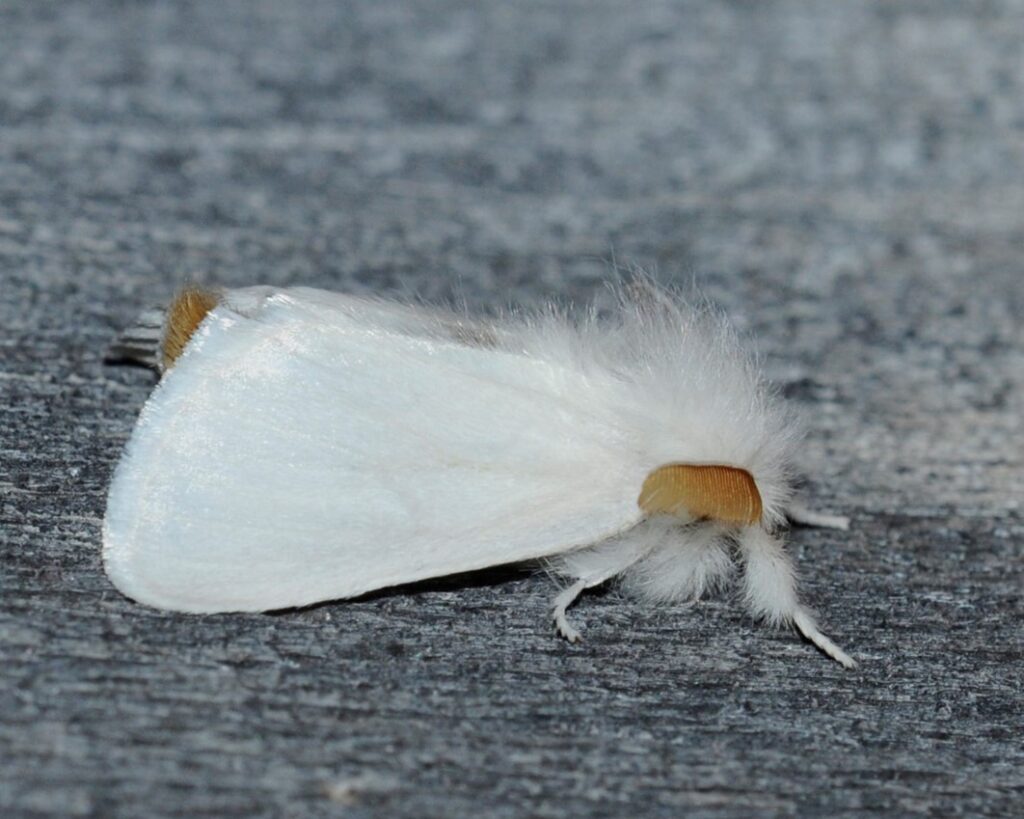
Adult male Browntail Moth. Males have feathered antennae; females do not.
The Browntail Moth undergoes cyclic population explosions that last a few years in Maine. In Mid-Coast Maine, we appear to be on the waning part of that cycle, although there were still plenty of winter webs around last winter. In Europe, numerous predators exist to control Browntail Moth numbers. Their cyclic population dynamics in the United States likely delays or prevents emergence of predators that will control their numbers long term.

